You can contact LEARNZ, part of CORE Education, at:
Postal Address:
PO Box 13 678,
Christchurch 8141,
New Zealand
Water depth: 2470m
Sea temperature: 17.4°C
Tangaroa Speed: 11.2knots
Hello Everyone,
Early tomorrow morning you will arrive back in New Zealand having completed your nine day voyage on board the RV Tangaroa. It has been an action packed trip with Argo Float deployment, CTD use and working with scientists as they crunch their data.
Awesome audioconferences
You spoke to both Mount Somers Springburn School and Queen Margaret College during the final audioconference for the trip. Like lots of other students they were interested in how the Argo works and how long it lasts. A lot of the technology used for the Argo Float is quite simple with no engine or moving parts. The Argo goes up and down by changing its density. It can’t change its weight but it can change how much space it takes up (its volume) by pumping oil in or out of a bladder at the bottom of the float. When the bladder is full the float rises and when the oil is pumped out of the bladder then back inside the float, it will sink. This is a simple way to change the Argo Float's buoyancy and it doesn’t use very much battery power. Most of the battery is used to transmit data when the float reaches the surface.
The life of an Argo
An Argo is designed to last about five years before its battery runs out. Most Argoes die due to battery failure rather than being hit by things like ships or marine life. Argo Floats have been seen with shark teeth marks on them but this is rare. Luckily the floats don't spend a lot of time on the ocean surface so they are not damaged by big waves and usually the bow wave from ships is enough to push a float away so it isn't run over.
Deep Argo Floats aren’t programmed to go down to a specific height; instead they go all the way to the bottom. The float knows when it is close to the sea floor because it has a two metre long tail. This cable touches the bottom and takes some of the weight of the float so it stops and then heads back to the surface.
Last deployment
You deployed the last three Argo Floats today and helped with the CTD. The RV Tangaroa slowed down at the chosen locations so you could launch the Argoes and then drop the CTD and compare the data they collected. Phil gave you some polystyrene cubes to draw on so that you could see how they would be affected by the pressure at 2,000m below the surface. After measuring the cubes you put them in an onion bag and fastened the bag tightly to the CTD unit. It was cool to see the bag come back up an hour and a half later with polystyrene cubes that had been squished to about half their original size. What do you think would happen if they went down to a depth of 5,000m?
After deploying the last of the six regular Argo Floats your work was done and all that was left to do was head for shore. In a year’s time NIWA will return to try and recover the two prototype Deep Argoes so they can see how they have coped and make final changes before deploying more.
This voyage has allowed you to experience life at sea and gain an insight into the life of an oceanographer. You may have more questions about the ocean now than when you started but in time I’m sure the data collected from Argo Floats will help answer some of these questions. I hope you have enjoyed this field trip as much as I have and can join us on another one soon.
Bye for now,
Shelley
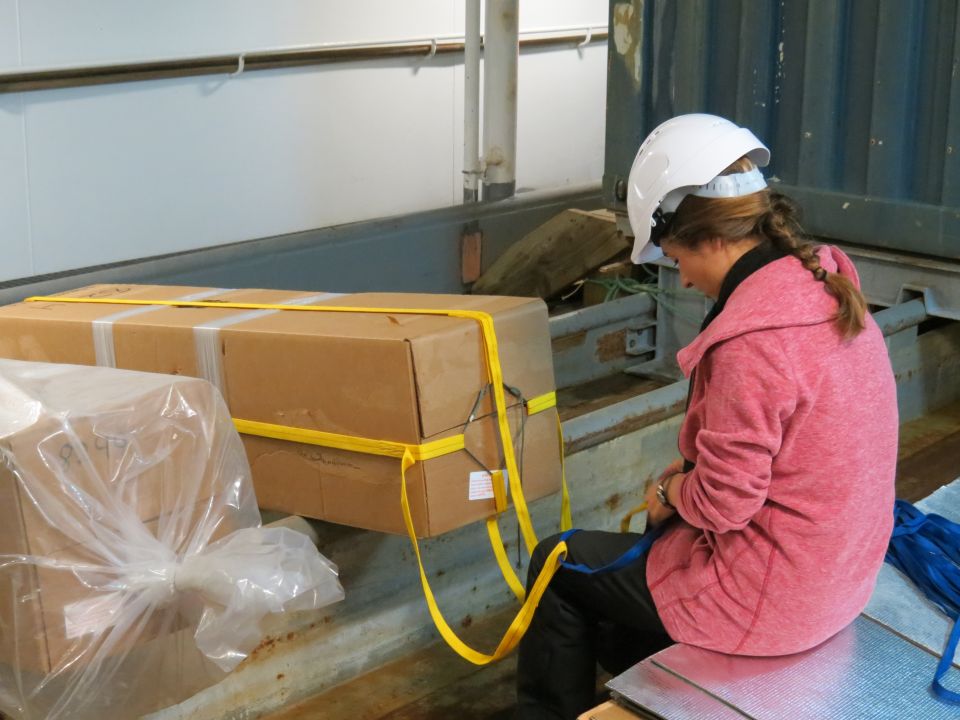
Nathalie prepares the last two Argo Floats for deployment. A harness is put around each box which will release when the box hits the water. What triggers the harness to release?
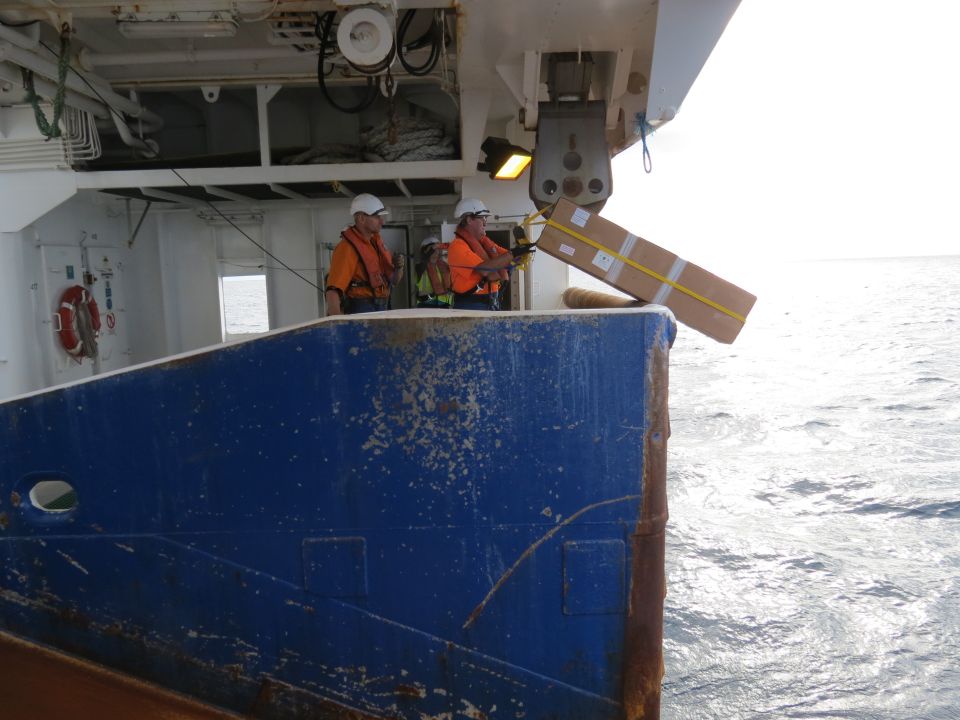
The Argo Float is lowered off the stern of the RV Tangaroa. Why do the Argo Floats have to be lowered so carefully?
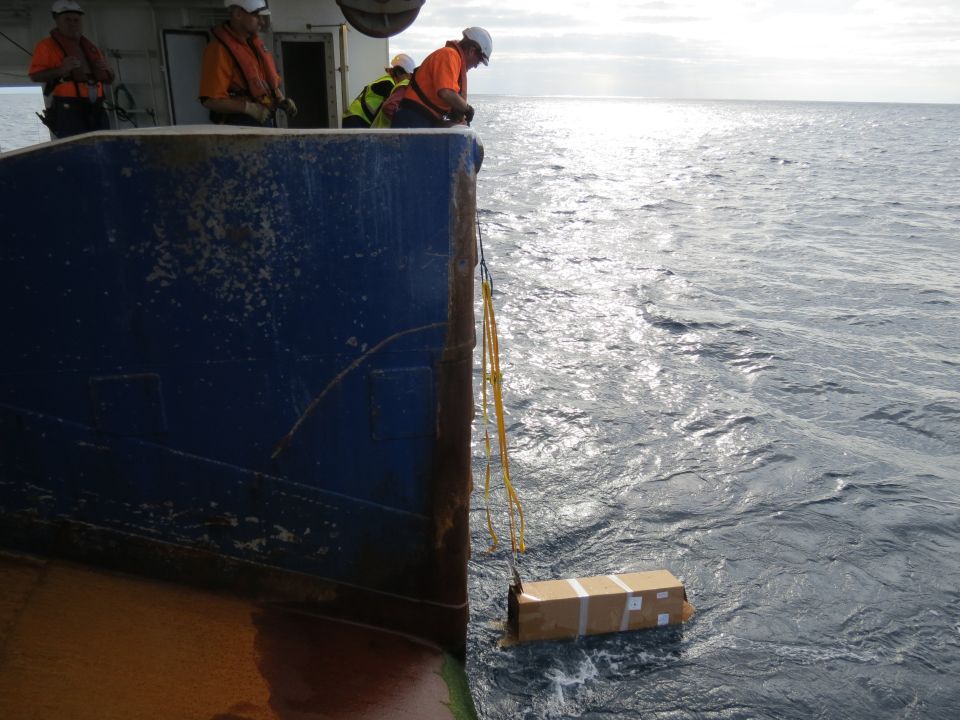
The Argo Float is released and will drift away from the boat.
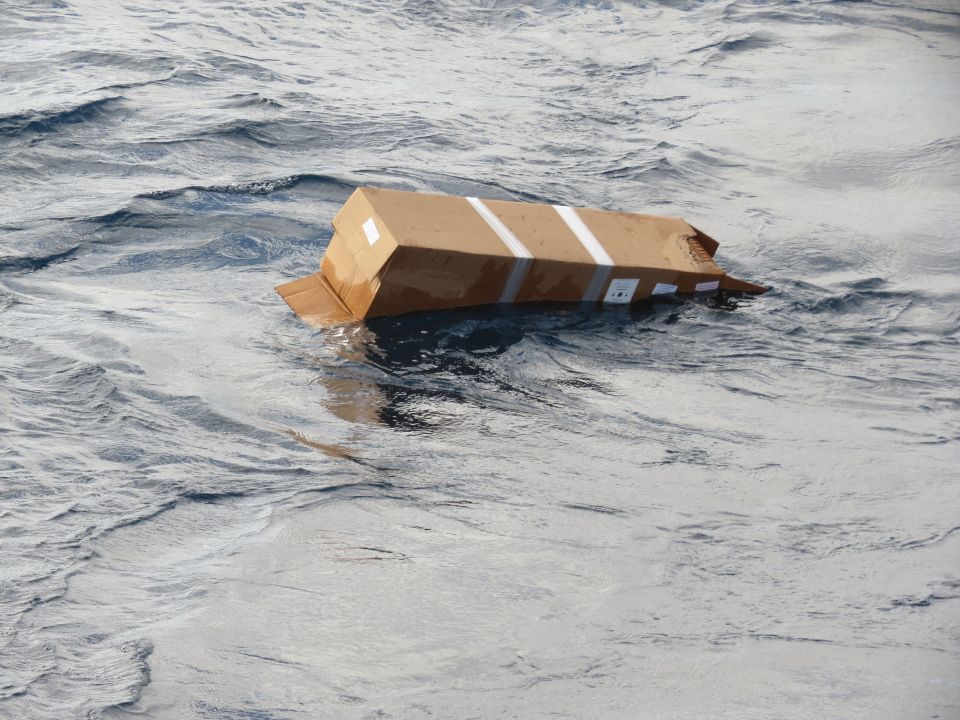
It will take about 15 minutes for the box to completely open and the Argo Float to fall out. What happens to the box?
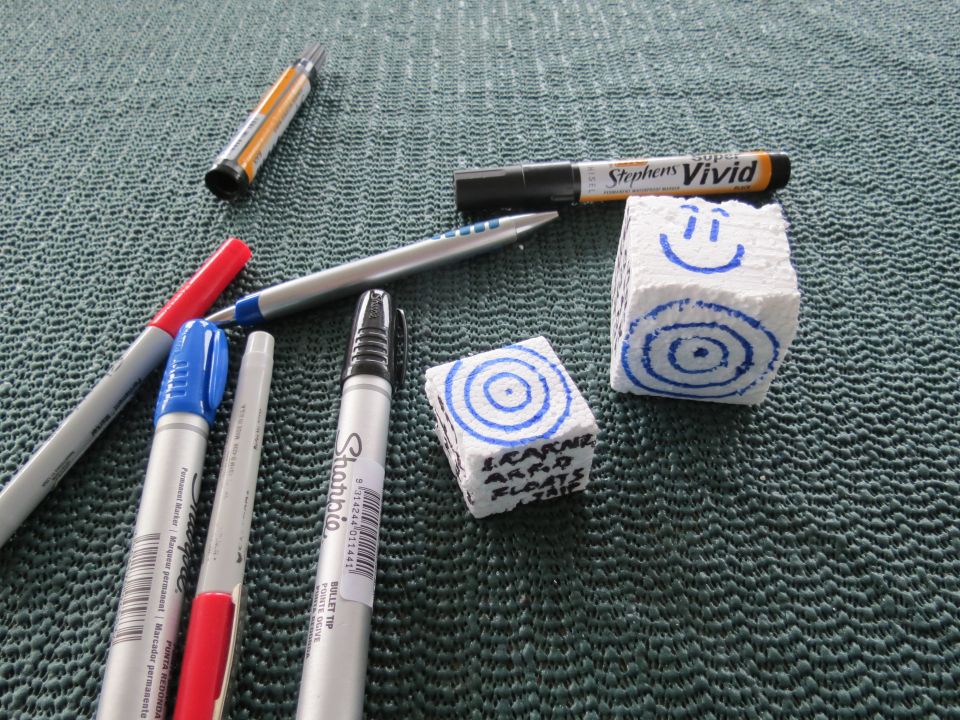
Polystyrene cubes were measured and drawn on ready for a journey to a depth of 2000m on the CTD.
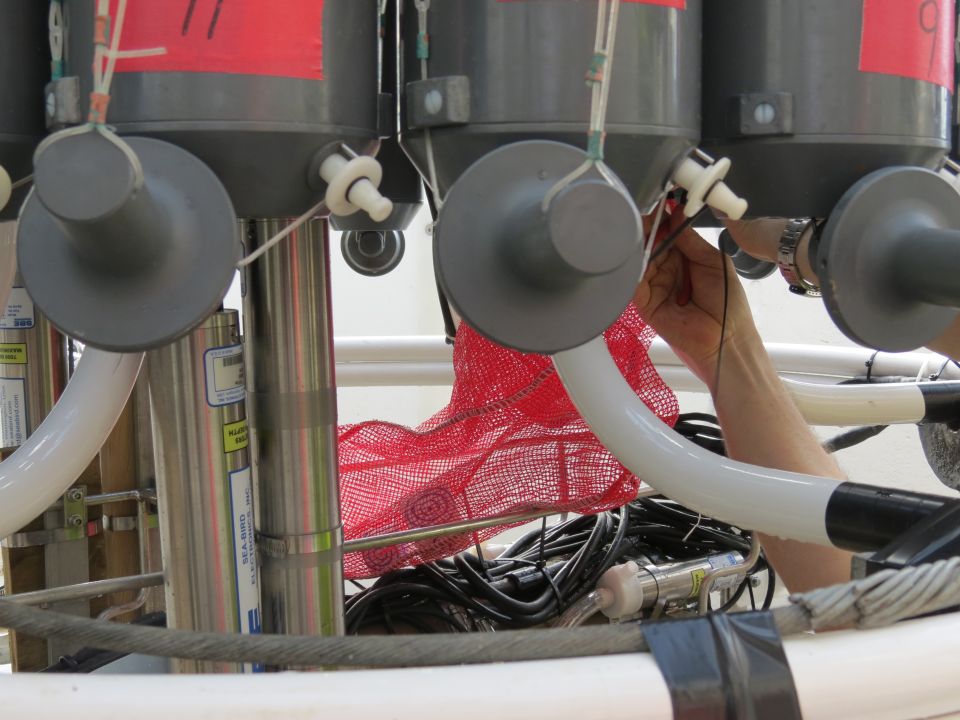
The polystyrene cubes are put in an onion bag so they will be free to float around and will be able to see how they cope with the enormous pressure at 2000m.
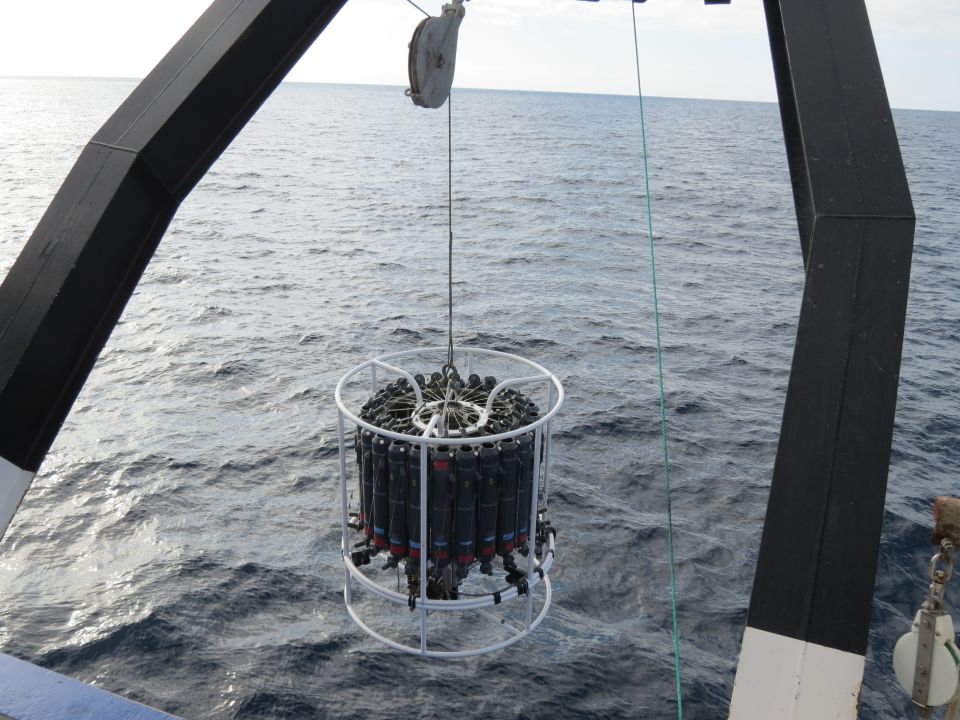
The CTD is brought back on board after an hour and a half of sampling water down to a depth of 2000m. Why was the CTD used after deploying the Argo Float?
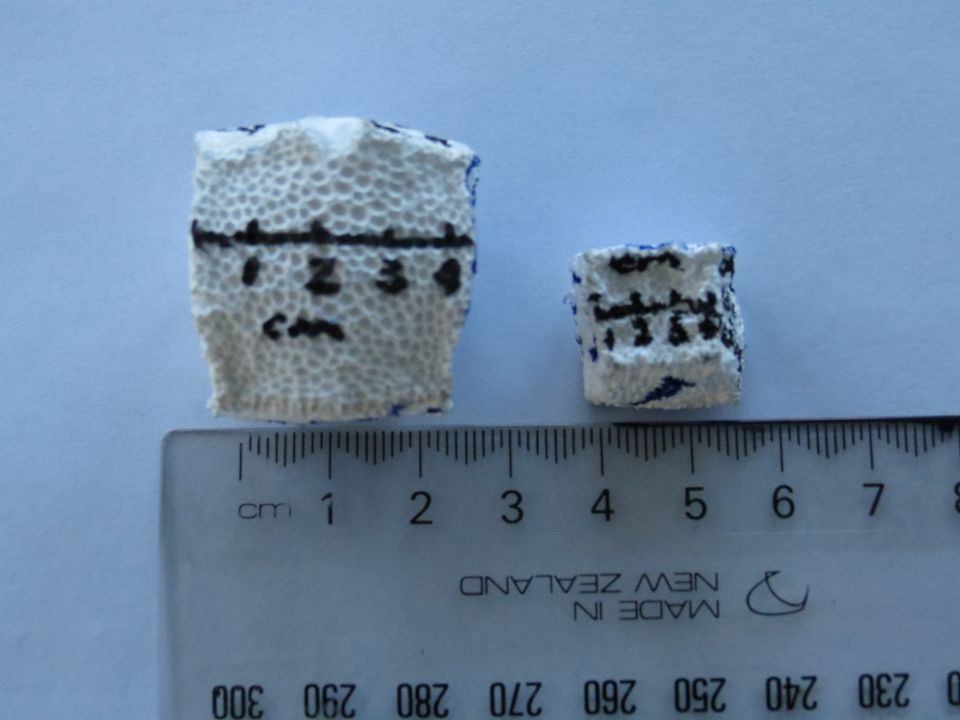
This is what the polystyrene cubes looked like after they had come back from 2000m below the sea surface. How much have they shrunk?
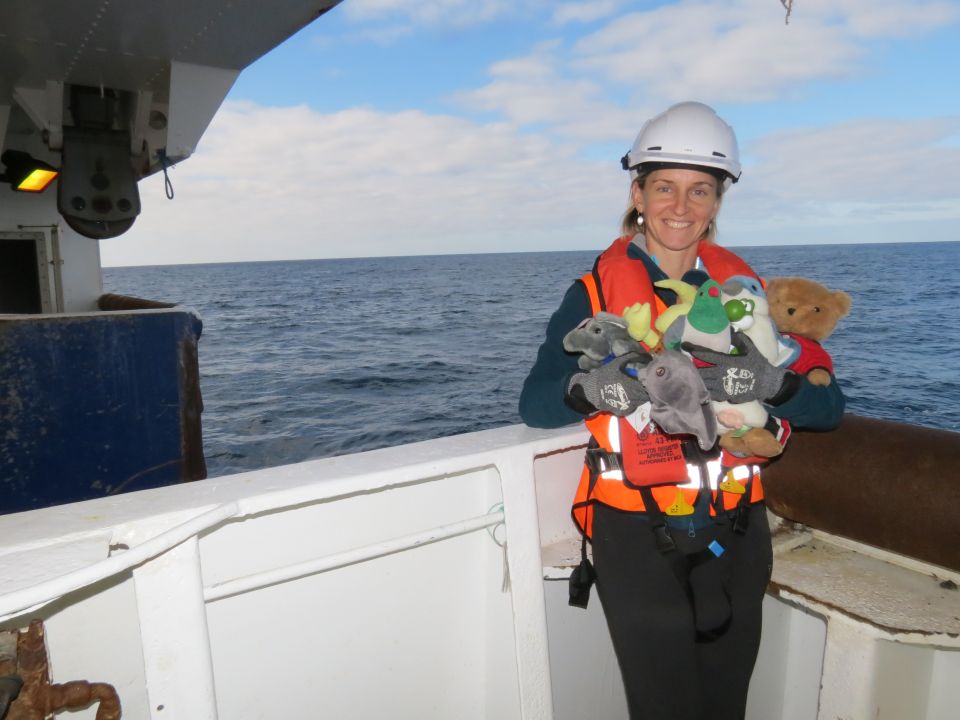
Shelley and the ambassadors enjoy a last look around RV Tangaroa towards the end of the voyage.

Many Albatross have been seen near the boat. This is a Mollymawk photographed by Esme van Wijk.